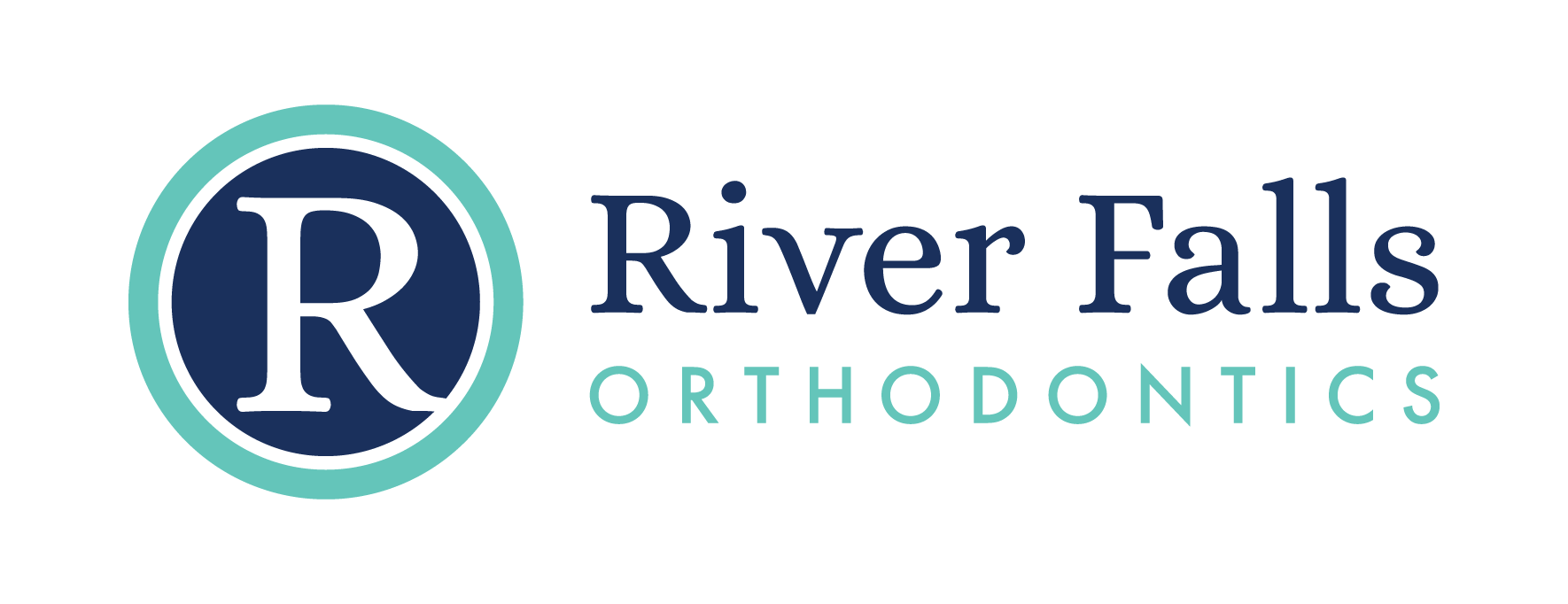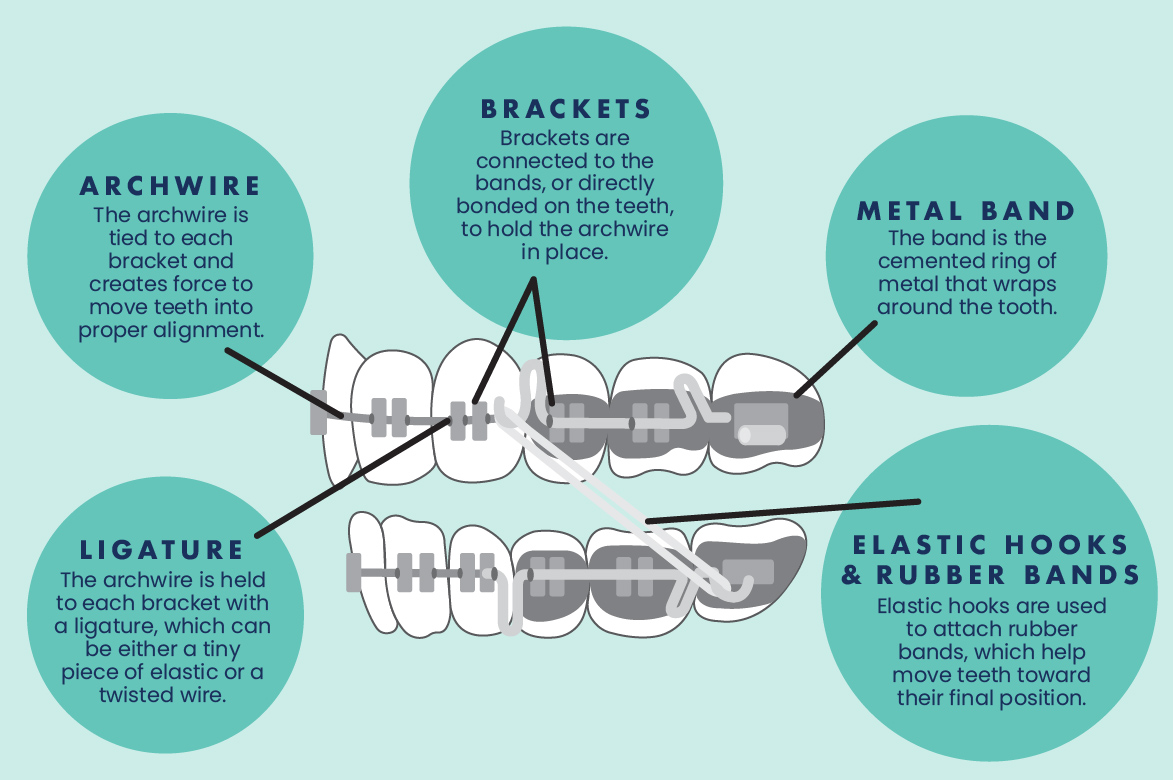Your braces are made of many different pieces, but there’s no need to be puzzled by what each piece does for you! Braces typically consist of orthodontic brackets, metal bands, archwires, and ligatures, plus some other auxiliary appliances that help move treatment along. At River Falls Orthodontics in Simpsonville, SC, our team is focused on providing the highest quality orthodontic care while also educating our patients on the tools, appliances, and processes that aid their treatment.
Orthodontic Brackets
Orthodontic brackets are the most familiar parts of traditional metal braces or ceramic braces. Small metal or ceramic brackets are bonded to your teeth to hold the archwire and ligatures in place. Your orthodontist uses brackets to secure ligatures, the small elastics that fit inside your brackets. Each tooth has its own bracket to hold a ligature, and each bracket plays a role in tooth movement.
Archwires
Once your brackets are bonded to your teeth, your orthodontist will place the archwire into your brackets. This wire connects each of your brackets and can be made of stainless steel or nickel titanium. As your orthodontic treatment progresses, your brackets will slide along the archwire as your teeth gently become aligned.
Ligatures
Ligatures are the small elastic bands placed within your brackets during treatment. Ligatures can come in many colors, and they’re changed out at each adjustment appointment. These ligatures are placed in your brackets to securely hold the archwire once it is tightened.
Some patients may have self-ligating braces, which don’t have elastic ligatures. Instead, they have ligating brackets that do the work of ligatures themselves.
Metal Bands
Metal bands are stainless steel bands that wrap around your back molars during orthodontic treatment. Because the back molars are the last teeth to finish coming in, it can be more difficult for brackets to stay bonded to them. The bands are attached using a special dental cement, and the archwire is secured through a metal tube that sits on the outside of the metal band.
Auxiliaries
Based on the needs of your smile, your orthodontist may recommend auxiliary orthodontic appliances to help move your treatment along. Your treatment may include elastic rubber bands, power chains, or coil springs, depending on the requirements of your unique smile.
Elastic rubber bands help align your jaw so your top and bottom teeth meet in their proper positions when your mouth is closed. Your orthodontist will provide instructions on how to use these bands and where exactly to place them if they are necessary for your treatment.
Power chains look like a series of connected ligatures and are used to close spaces between your teeth. These elastic chains stretch across the teeth to join spaces that need to be closed and are held in place by stainless steel ligatures.
Coil springs open up space for teeth to properly move into their new position. Your orthodontist will compress the spring so that it can slowly and gently create space between your teeth.
Schedule a Complimentary Consultation Today!
If you have questions about your orthodontic treatment or would like to schedule a complimentary consultation, contact River Falls Orthodontics today! Our orthodontic team in Simpsonville is ready to help you achieve the smile of your dreams!

